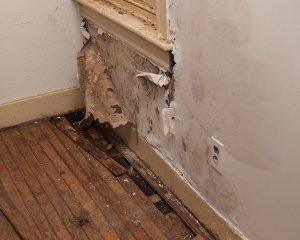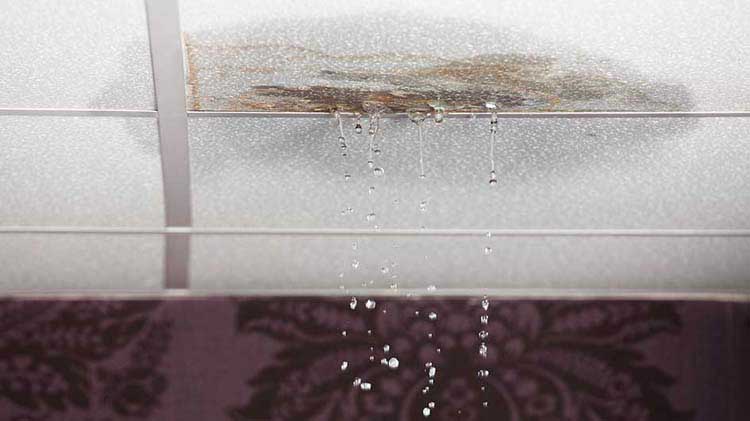Discover The Factors Causing Water Seepage in Your House
Discover The Factors Causing Water Seepage in Your House
Blog Article
Just about everyone seems to have their personal perception when it comes to How to detect water leaks in your home.

Leakages not just trigger waste of water but can additionally cause unnecessary damages to your house and advertise undesirable natural growth. Unfortunately, water leakages might go unnoticed since the majority of the pipework in our residence is concealed. By looking and recognizing for daily circumstances that create leakages, you can safeguard your home from future leaks as well as unneeded damages. Today, we will consider 6 leakage causes that may be creating your pipelines to drip.
Elbowing in origins
Most water leakages start outside the residence instead than inside it. You could see damp spots or sinkholes in your backyard, and that could imply that tree origins are getting into water lines triggering water to leak out.
Rusty water supply
As time goes by, your plumbing system ages and corrosion such as corrosion might start eating away the pipes. This could be the source of staining or bending on your pipes. This calls for an assessment with your plumber promptly. If our plumbing system is old, think about changing the pipes given that they go to a greater risk of rust than the more recent versions.
Faulty Pipeline Joints
The factor at which your pipelines connect is often the weakest link in the waterline. Pipe joints can weaken with time, resulting in water leaks. The majority of pipe joints are not easily noticeable. If you have loud pipelines that make ticking or banging sounds, specifically when the warm water is activated, your pipe joints are probably under a lot of stress. It is recommended to have your plumber inspect your system yearly.
Immediate temperature level modifications.
Severe temperature level modifications in our pipelines can cause them to broaden and also contract suddenly. This development and also tightening may cause splits in the pipelines, especially if the temperature level are below cold.
Poor Water Connectors
At times, a leak can be created by loosened hose pipes and also pipes that supply your devices. In instance of a water connections leakage, you may observe water running directly from the supply line or pools around your devices.
Clogged Drains
Obstructed drains might be bothersome and also inconveniencing, but they can often wind up creating an overflow leading to rupture pipelines. Maintain removing any type of products that might drop your drains that could block them to avoid such inconveniences.
All the above are sources of leaks however not all water leakages result from plumbing leaks; some leaks may come from roofing system leakages. All leakages need to be fixed instantly to avoid water damages.
Leakages not only create waste of water but can also create unneeded damage to your residence as well as promote undesirable organic development. By looking and also comprehending for everyday scenarios that create leakages, you can secure your home from future leaks as well as unnecessary damage. Today, we will certainly look at 6 leakage creates that might be creating your pipes to trickle.
At times, a leak can be created by loose tubes as well as pipes that provide your devices. In instance of a water connections leakage, you may see water running straight from the supply line or puddles around your home appliances.
How To Check For Water Leak In Your Home
How To Check for Leaks
The average household's leaks can account for nearly 10,000 gallons of water wasted every year and ten percent of homes have leaks that waste 90 gallons or more per day. Common types of leaks found in the home are worn toilet flappers, dripping faucets, and other leaking valves. These types of leaks are often easy to fix, requiring only a few tools and hardware that can pay for themselves in water savings. Fixing easily corrected household water leaks can save homeowners about 10 percent on their water bills.
To check for leaks in your home, you first need to determine whether you're wasting water and then identify the source of the leak. Here are some tips for finding leaks:
Take a look at your water usage during a colder month, such as January or February. If a family of four exceeds 12,000 gallons per month, there are serious leaks.
Check your water meter before and after a two-hour period when no water is being used. If the meter changes at all, you probably have a leak.
Identify toilet leaks by placing a drop of food coloring in the toilet tank. If any color shows up in the bowl after 10 minutes, you have a leak. (Be sure to flush immediately after the experiment to avoid staining the tank.)
Examine faucet gaskets and pipe fittings for any water on the outside of the pipe to check for surface leaks.
Undetected water leaks can happen without the home or business owner even realizing. If you suspect a water leak, but not able to find the source. It is time to contact a professional water leak detection service, The Leak Doctor.
How To Find a Water Leak In Your Home
https://www.leakdoctor.com/blog/How-To-Check-For-Water-Leak-In-Your-Home_AE197.html

We hope you liked our excerpt on Common Water Leaks In House. Thank you so much for taking the time to browse our piece of content. Loved our content? Please share it. Let someone else find it. I love reading our article about How Fast Water Damage Can Ruin Your Home.
Quick fix? We're here. Report this page